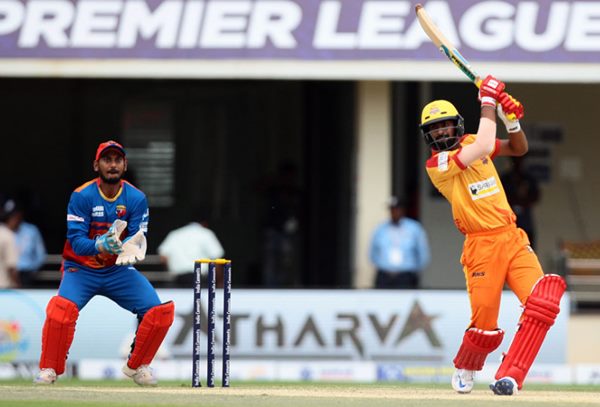A look at the VJD method which is being used in the TNPL
2 Min Read


The Tamil Nadu Premier League (TNPL) is using the Jayadevan system also known as the VJD method. In the 4th match of the TNPL between Dindigul Dragons and Madurai Super Giants the method was used after it was hampered by rain. The 18 overs a side game was determined by the VJD method and not the traditionally and more popularly used Duckworth-Lewis rule. DD won the match by 14 runs as per the VJD method.
It was formulated by V Jayadevan a civil engineer from Kerala and hence is named after him. This isn’t the first time that the method has been used, in the past, it was used in the Indian Cricket League. The VJD method was considered as a replacement for the D/L rule by the ICC and also for implementation in the IPL.
After considering the options the ICC had in 2012 rejected Jayadevan’s proposed system and stated: “The committee unanimously agreed that there was no evidence of any significant flaws in the D/L method nor did the committee believe that any improvements could be offered by the VJD method.”
VJD is at a few aspects a more correct method of calculation but the ICC decided to continue with the D/L method which was later upgraded as the Duckworth-Lewis-Stern method. One of the biggest differences is that the Jayadevan method keeps in account the stats from the previous games whereas the D/L method doesn’t consider the batsmen who are there on the strike and not even the form that the team has been in. These drawbacks definitely call for a change and VJD could well be tried.
Also read – Stats: Indian cricketers who played international matches in most countries
While the DL method calculates the score at an increasing scoring rate as the innings progresses which isn’t something that can be taken for granted as the situation of the game changes with the overs. VJD system, on the other hand, is projected as a scientific alternative which divides the innings in different phases. It considers the field restrictions into effect in the first few overs, the fall in the middle overs and peak in the death overs.
Here is how the projected scores vary as per the two systems:
(20 over match scores)
Team 1 Score – 150: DLS Target 93; VJD Target 91
Team 1 Score – 200: DLS Target 124; VJD Target 118
Team 1 Score – 250: DLS Target 154; VJD Target 142
Team 1 Score – 300: DLS Target 163; VJD Target 163
Team 1 Score – 350: DLS Target 174; VJD Target 182
(Source)
Download Our App